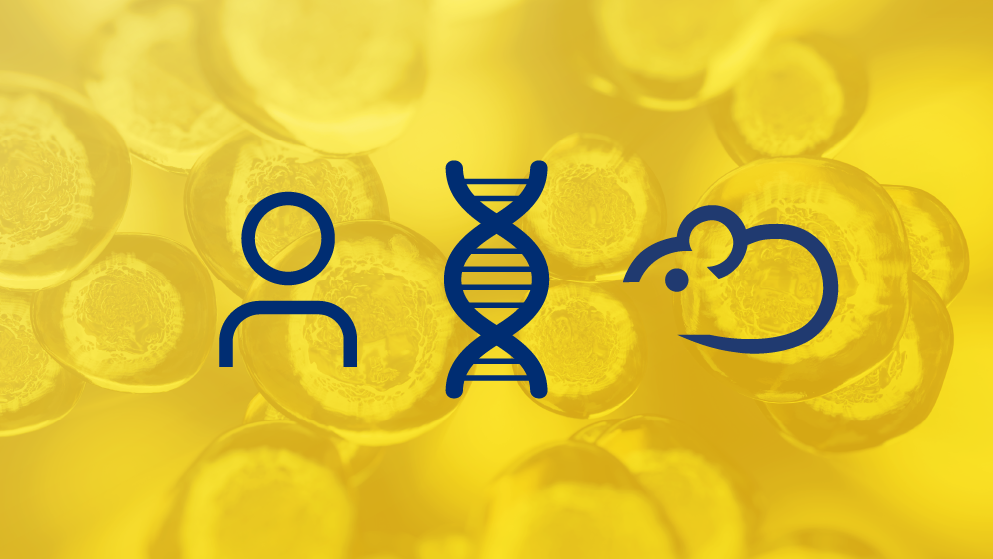
Frequently Asked Questions about CD34+ HSC Humanized Mice
Humanized mouse models serve as an innovative and cost-effective platform to simulate trials, evaluate multiple drugs alone or in combination, and produce predictive data. But, there are a number of questions that frequently arise with this model. Here are some of the more frequent questions and answers to using CD34+ hematopoietic stem cell humanized mice.
What is a humanized mouse?
The term “humanized” can mean several things and definitions depend upon the context. It is crucial to have a clear operational definition for the term for any given experiment or model system. A humanized mouse in its broadest sense refers to a mouse that harbors engrafted human tissue or cells (think immune cells or engrafted tumor tissue), or expresses a human gene introduced as a randomly-integrated transgene, targeted knock-in mutation, or by exon-swapping. In this blog post, we will refer to humanized mice as those that have been engrafted with CD34+ hematopoietic stem cells (HSC) isolated from umbilical cord blood. These engrafted HSC migrate to the bone marrow niche in the host mouse where they undergo multi-lineage differentiation into all major immune cell types. This methodology results in a powerful platform to study a human-like immune system in a mouse.
Why is CD34+ hematopoietic stem cell donor important?
CD34+ is a cell surface marker used to identify hematopoietic stem cells with multi-lineage potential. A rich source of such cells is umbilical cord blood from neonates. Given that there is a finite amount of material from a donor, variability in cord blood donor is a reality of working with CD34+ HSC humanized mice. Overall engraftment is known to vary by cord blood donor when measured by hCD45+ cells and differentiation into different immune cell subpopulations in the peripheral blood, bone marrow, and spleen. Additionally, response to experimental treatments such as check-point inhibitors or other immune-system modulators do vary in a donor-dependent manner. So, how can this be accounted for experimentally? We recommend that you consider using mice engrafted with HSC from two to four cord blood donors (non-pooled), and spread the different donors across all treatment arms in your experiment. This approach enables you to design your study for known variability and better enables you to detect a treatment response.
What host strains are commonly used for humanization at JAX?
Engraftment of primary human tissue into a mouse requires a profoundly immuno-deficient host to prevent host rejection of non-self-tissues. Enter the NOD.Cg-Prkdcscid Il2rgtm1Wjl/SzJ (NSG™) mouse and NSG variant strains. NSG™ are exquisitely immuno-deficient owing to the NOD inbred background which impairs innate immune function, the Prkdcscid mutation which prevents maturation of T and B cells, and the Il2rgtm1Wjl mutation which blocks signaling of six different cytokines. An important consequence of the Il2rgtm1Wjl mutation is deficiency of functionally mature NK cells, which historically have been a significant barrier to HSC engraftment. Moreover, NOD mice harbor a unique allele of Sirpa leading to enhanced engraftment of human HSC.
While humanized NSG™ mice are an excellent platform to study T cell responses, NSG™ variant strains harboring transgenes for different human cytokines can be used to promote differentiation of specific cell populations. NOD.Cg-Prkdcscid Il2rgtm1Wjl Tg(CMV-IL3,CSF2,KITLG)1Eav/MloySzJ (NSG™-SGM3) enhances engraftment of the myeloid lineage and regulatory T cells. NOD.Cg-Prkdcscid Il2rgtm1Wjl Tg(IL15)1Sz/SzJ (NSG™-IL15) better supports development of human NK cells. The In Vivo Services group at JAX regularly engrafts these strains with HSC so that they are easily accessible to researchers around the world. Our team and collaborators have also worked to comprehensively evaluate human immune system reconstitution in NSG™ and NSG-SGM3 mice engrafted with CD34+ HSC.
Currently, more than 40 NSG™ variant strains are available from JAX. Many of these strains can be used to further refine experimental systems using engrafted CD34+ HSC to support specific cell populations or interactions. There really is a host of possibilities!
How should I care for my humanized mice? Are they immuno-competent?
While CD34+ HSC humanized mice do have a human-like immune system on-board, it is not fully functional. These mice should still be handled very carefully and treated as an immuno-deficient strain. We are glad to offer resources to help you care for highly immuno-deficient strains like NSG™. You may also find our webinar dedicated to Tips and Tricks for Care of NSG™ mice helpful to review. Additionally, you should be sure to check with your institution regarding requirements for housing mice with engrafted human tissue.
Where can I find protocols that describe how to “humanize” mice?
Below is a list of publications that describe protocols and considerations for creating humanized NSG™ mice. Pearson, et al. 2008 is especially recommended.
- McDermott SP, et al. 2010. Comparison of human cord blood engraftment between immunocompromised mouse strains. Blood. Jul 15;116(2):193-200 [PubMed ID: 20404133]
- Brehm MA, et al. 2010. Parameters for establishing humanized mouse models to study human immunity: analysis of human hematopoietic stem cell engraftment in three immunodeficient strains of mice bearing the IL2rgamma(null) mutation. Clin Immunol. Apr;135(1):84-98. [PubMed ID: 20096637]
- Pearson T, et al. 2008. Creation of "humanized" mice to study human immunity. Curr Protoc Immunol. May; Chapter 15:Unit 15.21. [PubMed: 18491294]